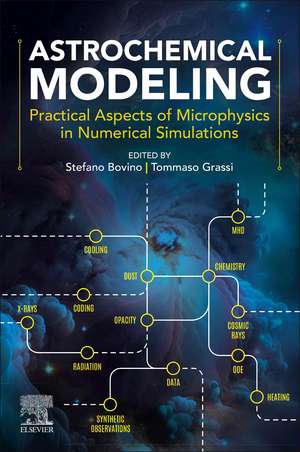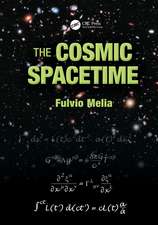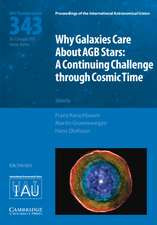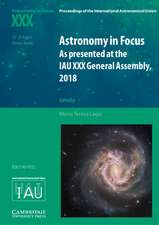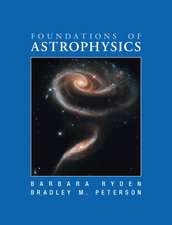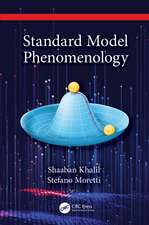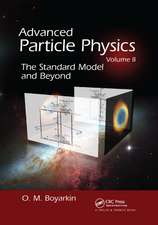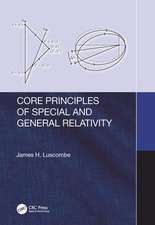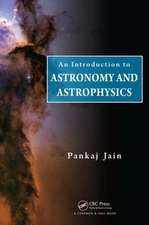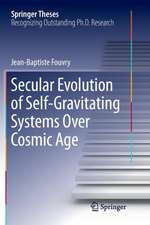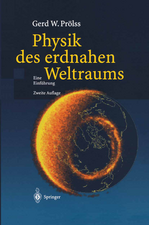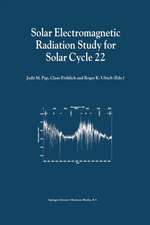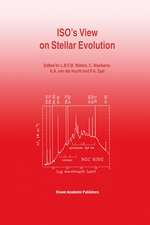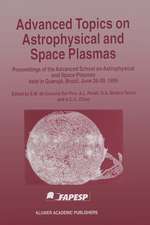Astrochemical Modeling: Practical Aspects of Microphysics in Numerical Simulations
Editat de Stefano Bovino, Tommaso Grassien Limba Engleză Paperback – 24 noi 2023
Furthermore, a section on case studies provides concrete examples of computational modelling usage for real-world applications and cases where the techniques can be applied is also included.
- Provides theoretical background on topics that is followed by computational examples and tailored tutorials to allow for full understanding and replication of techniques
- Written by theoreticians and authors with direct experience on the computational implementation to provide a realistic and pragmatic approach to common problems
- Details up-to-date information on available databases, tools and benchmarks for practical usage, forming a good starting point for introductory readers and a reference for actual implementation for more advanced researchers
Preț: 766.77 lei
Preț vechi: 1001.41 lei
-23% Nou
Puncte Express: 1150
Preț estimativ în valută:
146.72€ • 159.87$ • 123.63£
146.72€ • 159.87$ • 123.63£
Carte tipărită la comandă
Livrare economică 16-30 aprilie
Livrare express 19-25 martie pentru 95.31 lei
Preluare comenzi: 021 569.72.76
Specificații
ISBN-13: 9780323917469
ISBN-10: 0323917461
Pagini: 432
Dimensiuni: 191 x 235 x 25 mm
Greutate: 0.74 kg
Editura: ELSEVIER SCIENCE
ISBN-10: 0323917461
Pagini: 432
Dimensiuni: 191 x 235 x 25 mm
Greutate: 0.74 kg
Editura: ELSEVIER SCIENCE
Public țintă
Research scientists, professionals, academics, graduate students and undergraduates in astrochemistry, computational astrophysics, astronomy, and quantum chemistry. As well as undergraduates and graduate students working on the interdisciplinary field of astrochemistry and astrobiology, and advanced researchers who want to develop computational models to study astronomical regions; Researchers and professionals in planetary atmospheres, chemistry, and experimental physicsCuprins
1. Introduction to Astrochemical Modeling
Part I: Chemistry
2. Designing a Gas-Phase Chemical Network
3. Time-Dependent Integration of Chemical Networks
4. Dust and Surface Chemistry
5. Integrating Astrochemistry in Hydrodynamics
Part II: Radiation and cosmic rays
6. Optically Thin Atomic Photochemistry
7. Molecules and Radiation Shielding
8. Dust-Radiation (Attenuation and Other)
9. Cosmic Rays: Physics, Chemistry, and Computational Challenges
Part III: Thermal processes
10. Implementing Cooling and Heating I: Atomic Gas
11. Implementing Cooling and Heating II: Molecular Gas
12. Implementing Cooling and Heating III: Dust Grains
Part IV: Beyond the essentials
13. Extra Complexity
14. Synthetic Observations: Bridge the Gap Theory-Observations
Part VI: Case studies
15. Modelling large scales: galaxy and molecular clouds
16. Modelling small scales: star-formation in filaments, clumps, cores
17. Modelling radiation and chemistry in protostellar environments
18. The challenge: modelling protoplanetary discs
19. Cosmological simulations first stars and SMBHs
20. Conclusions and future perspectives
Part I: Chemistry
2. Designing a Gas-Phase Chemical Network
3. Time-Dependent Integration of Chemical Networks
4. Dust and Surface Chemistry
5. Integrating Astrochemistry in Hydrodynamics
Part II: Radiation and cosmic rays
6. Optically Thin Atomic Photochemistry
7. Molecules and Radiation Shielding
8. Dust-Radiation (Attenuation and Other)
9. Cosmic Rays: Physics, Chemistry, and Computational Challenges
Part III: Thermal processes
10. Implementing Cooling and Heating I: Atomic Gas
11. Implementing Cooling and Heating II: Molecular Gas
12. Implementing Cooling and Heating III: Dust Grains
Part IV: Beyond the essentials
13. Extra Complexity
14. Synthetic Observations: Bridge the Gap Theory-Observations
Part VI: Case studies
15. Modelling large scales: galaxy and molecular clouds
16. Modelling small scales: star-formation in filaments, clumps, cores
17. Modelling radiation and chemistry in protostellar environments
18. The challenge: modelling protoplanetary discs
19. Cosmological simulations first stars and SMBHs
20. Conclusions and future perspectives
